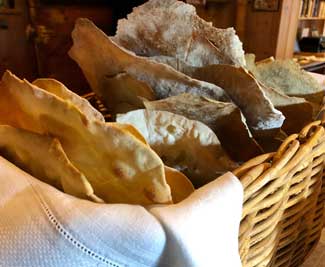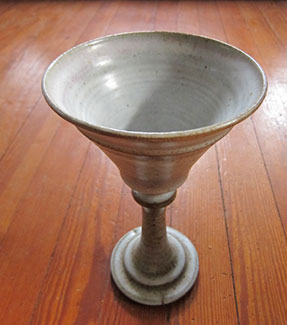PRAYER & LITURGY


“The Holy Eucharist is the source and summit of the Christian life.”—From Lumen Gentium, II Vatican Council
In the monastic tradition the Feast of Corpus Christi is celebrated on the Thursday after Trinity Sunday and in parishes on the following Sunday. Also known as the Solemnity of the Most Holy Body and Blood of Christ, the feast was first introduced in 1246 by Bishop Robert Torote of Liège, who was inspired by the revelations of St. Juliana of Liège. In 1264 Pope Urban the IV, former Archbishop of Liège, instituted the Solemnity of Corpus Christi to be observed by the universal Church on the Thursday after Pentecost to honor the real presence of the Body and Blood of Christ in the Eucharist. Initially the feast was celebrated on Thursday in commemoration of the Last Supper and the Institution of the Eucharist. During the Pontificate of Pope St. Paul the VI, the celebration in parishes was transfered to Sundays to allow more members of the Faithful to participate in the Corpus Christi liturgy and procession. Pope St. John Paul II said of Eucharistic processions so beloved to many:
“Our faith in the God who took flesh in order to become our companion along the way needs to be everywhere proclaimed, especially in our streets and homes, as an expression of our grateful love and as an inexhaustible source of blessings.”THE REAL PRESENCE OF JESUS IN THE EUCHARIST—Apostolic Letter: Mane Nobiscum Domine, 2004-2005
In August 2019, a report from the Pew Research Center revealed that 69% of Catholics in the United States said they believed the bread and wine used at Mass were symbols of the body and blood of Jesus Christ, not the real presence. Bishop Robert Barron, theologian and founder of the global media ministry Word on Fire, expressed his astonishment and anger at the number of Catholics who do not believe in transubstantiation, a core tenet of our faith.

Chalice created by
Professor Alexander Giampietro
He offered a lecture entitled The Real Presence of Jesus in the Eucharist at the 2019 Atlanta Eucharistic Congress as well as a longer presentation on the same topic at the 2020 Religious Education Congress. Referencing Scripture and the Fathers of the Church, Bishop Barron offers his insights and reflections, particularly on St. Thomas Aquinas in his profound, intimate love of Our Lord in the Eucharist. The videos, provided by the Word on Fire Ministry on their site, provide a perfect meditation in preparation for the Feast of Corpus Christi.
LAUDA SION
For the inauguration of the feast in 1264, St. Thomas Aquinas wrote music for both the Divine Office and Mass at the request of Pope Urban IV. The hymns, Pange lingua, Sacris solemniis, Adoro te devote, and Verbum supernum prodiens are sung at the Divine Office. At Mass we sing the Sequence Lauda Sion. We are privileged to offer here an original translation of the Sequence by monastery friend and colleague, classicist Joseph T. Moller. Dom Prosper Guéranger. O.S.B. sums up the beauty of the Lauda Sion in this way:
“The Church, the true Sion, expresses her enthusiasm, and love, for the living and life-giving Bread, in words which, at first sight, would seem too precise and scholastic, to comport the poetry of form and sentiment. The Eucharistic mystery is here developed with that concision and solemnity for which St. Thomas had such a wonderful talent. The words are accompanied by a chant which is worthy of them; and the two together excite in the Christian soul the sentiments of unearthly joy, which are so peculiar to this Feast of the Sacrament of Love.”
—From The Liturgical Year: The Time After Pentecost,
Dom Prosper Guéranger, Abbot of Solesmes, 1879
A beautiful recording of the Lauda Sion sung by Jeff Ostrowski is available. We pray that this new translation will enrich your celebration of Corpus Christi this year.
Lauda ducem et pastórem
In hymnis et cánticis.
Quantum potes, tantum aude:
Quia major omni laude,
Nec laudáre súfficis.
Laudis thema speciális,
Panis vivus et vitális,
Hódie propónitur.
Quem in sacræ mensa cœnæ,
Turbæ fratrum duodénæ
Datum non ambígitur.
Sit laus plena, sit sonóra,
Sit jucúnda, sit decóra
Mentis jubilátio.
Dies enim solémnis ágitur,
In qua mensæ prima recólitur
Hujus institútio.
In hac mensa novi Regis,
Novum Pascha novæ legis,
Phase vetus términat.
Vetustátem nóvitas,
Umbram fugat véritas,
Noctem lux elíminat.
Quod in cœna Christus gessit,
Faciéndum hoc expréssit
In sui memóriam.
Docti sacris institútis,
Panem, vinum, in salútis
Consecrámus hóstiam.
Dogma datur Christiánis,
Quod in carnem transit panis,
Et vinum in sánguinem.
Quod non capis, quod non vides,
Animósa firmat fides,
Præter rerum ordinem.
Sub divérsis speciébus,
Signis tantum, et non rebus,
Latent res exímiæ.
Caro cibus, sanguis potus:
Manet tamen Christus totus,
Sub utráque spécie.
A suménte non concísus,
Non confráctus, non divísus:
Integer accípitur.
Sumit unus, sumunt mille:
Quantum isti, tantum ille:
Nec sumptus consúmitur.
Sumunt boni, sumunt mali:
Sorte tamen inæquáli,
Vitæ vel intéritus.
Mors est malis, vita bonis:
Vide paris sumptiónis
Quam sit dispar éxitus.
Fracto demum Sacraménto,
Ne vacílles, sed memento,
Tantum esse sub fragménto,
Quantum toto tégitur.
Nulla rei fit scissúra:
Signi tantum fit fractúra:
Qua nec status nec statúra
Signáti minúitur.
Ecce panis Angelórum,
Factus cibus viatórum:
Vere panis filiórum,
Non mitténdus cánibus.
In figúris præsignátur,
Cum Isaac immolátur:
Agnus paschæ deputátur
Datur manna pátribus.
Bone pastor, panis vere,
Jesu, nostri miserére:
Tu nos pasce, nos tuére:
Tu nos bona fac vidére
In terra vivéntium.
Tu, qui cuncta scis et vales:
Qui nos pascis hic mortáles:
Tuos ibi commensáles,
Cohærédes et sodáles,
Fac sanctórum cívium.
Amen. Allelúja.
Praise the Guide and Shepherd
In hymns and songs.
As much as you can, that much do you dare
Because greater than every praise
Not in praise will you praise enough.
Praise for this theme to be specially beheld,
Bread living and life-giving
Today before you is set.
The one who lies on the sacred table as a meal
For the thronging brothers twelve
Given without doubt or hesitation.
Let the praise for him be full, let it be soundful
Let it be joyfully pleasing, let it be decorously fitting
The mind's jubilation.
A day, indeed, solemn is acted in deed
On which that table was first celebrated
And thus a rite instituted.
On this table of the new King
The New Pasch of the new Law
The old Passover brings to an end.
Oldness, by Newness
Shadow is put to flight by truth
Night, Light eliminates in illumination.
Because at this meal Christ bore
The act to be done, as he expressed it forth,
In his memory.
Instructed by these sacred rites
Bread, Wine, into our salvation
We consecrate together into this host.
This teaching is given to Christians
That into the flesh is brought over the bread
And the wine into blood.
What you do not understand, what you do not see,
Mindfully is strengthened in faith,
Beyond the order of things.
Under diverse appearances,
Signs only, and not the things themselves,
Hidden a reality beyond the ordinary.
Flesh food, blood drink:
Remaining still Christ entire
Beneath each appearance.
By the one partaking not cut into pieces
Not broken, not divided:
Whole and entire he is taken up.
Consumed by one, consumed by a thousand:
As much as is yours, so much is He.
Not consumed, He is being consumed.
Consumed by good men, consumed by bad men:
With outcome, still, unequal
For life or for destruction.
Death for the bad, life for the good:
See for equal portion taken up
How disparate the outcome.
From a breaking, only, of the Sacrament,
Do not hesitate, but remember
That there is as much within a fragment
However much in the whole is contained.
Nothing of the substance becomes cut apart;
Only the sign is to be broken:
Neither in what it was or what it will be,
Is the signified reality diminished.
Behold the bread of Angels
Made the bread of pilgrims
Truly the bread of sons
Not to be offered to the dogs.
In prefiguring it is signified,
When Isaac is sacrificed:
The paschal Lamb is intended
And the giving of manna to our fathers.
Good Shepherd, Bread truly,
Jesus, on us have mercy:
Do you feed us, look over and protect us:
You cause us, good things to see
In the land of the living.
You, who all things know and make well and strong:
Who feed us here destined to die
There your fellow partakers at the table
Coheirs and comrades in solidarity
Make us to be with you saints and citizens.
Amen. Alleluia.
(Translation of the Lauda Sion courtesy of Joseph T. Moller: Copyright © 2021 The Abbey of Regina Laudis. All rights reserved.)